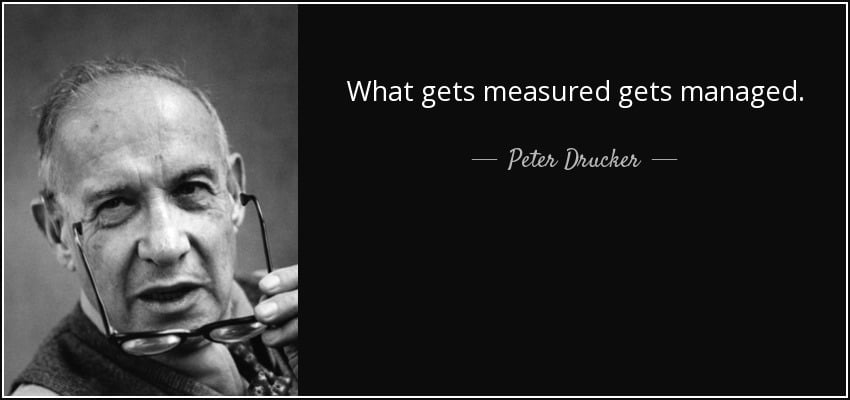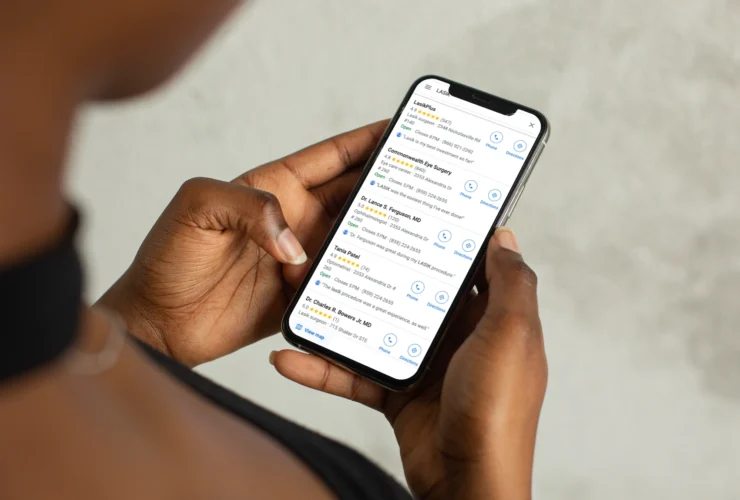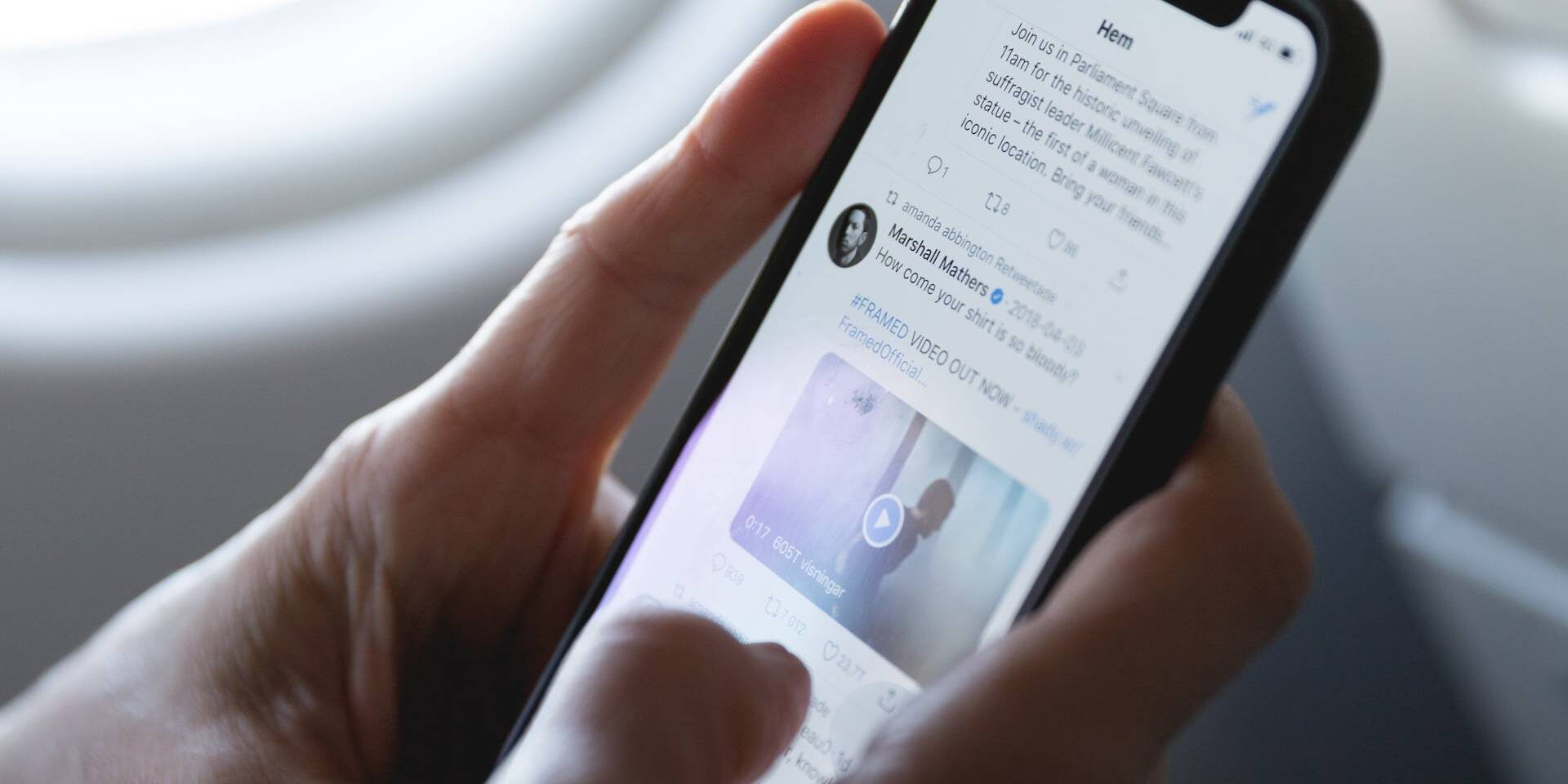Healthcare Social Media Best Practices in 2020
Healthcare Social Media Best Practices in 2020
Social media is a powerful tool for reaching new patients, sharing practice news, and connecting with peers. Done right, social media has the potential to grow awareness of your practice and lead to new patients.
But all too often, social media becomes a distraction. Physicians and their marketing managers find themselves wasting time on the distractions social media offers, or on time-consuming social media tasks that don’t deliver results.
If you want to use social media effectively as a doctor, you need to know how to focus and spend your time on the efforts that will yield the best results.
If you don’t want to get caught up in the time-wasting aspects of social media, but do want the powerful ROI it can offer, here are several best practices for doctors to engage on social media.
Best Practices for Doctors on Social Media
#1: Prioritize
When it comes to social media, you can’t expect to see results with an ad hoc, seat-of-your-pants mentality. The best results on social media come as a result of proper planning.
When it comes to social media, a well-organized editorial calendar is a must. We’ve talked about the importance of editorial calendars for healthcare blogging and content creation before. The same holds true for social media messages.
We’ve talked about the importance of editorial calendars for healthcare blogging and content creation before. The same holds true for social media messages.
Ideally, an editorial calendar will not only lay out the content you’re creating on your practice website, but will link it to social campaigns to share that content with your audience.
There are several great tools for creating editorial calendars and scheduling your social media content.
Our favorite is CoSchedule, but tools like Buffer, Hootsuite, and others are all comparable.
Regardless of which platform you choose, remember to segment your content for your different social media channels and the different audiences each channel contains.
A long-form blog post may receive great engagement as a LinkedIn business post, but it wouldn’t work on your Facebook profile. A short behind-the-scenes video of your practice may work great on Instagram, but wouldn’t connect with your audience on Twitter.
To some degree, the medium is the message – so don’t forget to keep each audience in mind when you create your campaigns.
#2: Schedule Your Messages Ahead of Time
 Unless your full-time job at your practice is to manage social media channels and content curation, it’s likely that you don’t have the time to spend all day on social media.
Unless your full-time job at your practice is to manage social media channels and content curation, it’s likely that you don’t have the time to spend all day on social media.
A far better strategy is to block off time each week to craft your social messages all at once.
Rather than creating content and managing social conversations each day as they come in, scheduling messages ahead of time allows you to be proactive and think about the social campaigns you’re crafting.
By scheduling messages and social campaigns ahead of time, you can manage replies and engage with patients far more effectively in real-time, rather than juggling those responsibilities with creating new messages every day.
The same tools that help you create editorial calendars also help with scheduling content, segmenting your messages by channel, time of day, and recycling old messages to keep your social media pipeline full.
Many of these tools will integrate into your website as well, so you can coordinate the publishing of new content to your social media profiles. These tools will also help you evaluate and analyze your audiences on each channel, and can provide suggestions on the best times of day to post on each social media channel for maximum engagement.
#3: Actively Engage
Speaking of engagement, many physicians don’t realize that there are right and wrong ways to join the conversation happening on social media.
To get the most out of social media, ask questions with your posts that will stimulat e engagement. If you’ve done the work to create great content, why not get the conversation started?
e engagement. If you’ve done the work to create great content, why not get the conversation started?
However, it’s important to focus on creating value first and foremost. Many physicians only focus on asking questions that serve their needs, but forget their audience. By asking patients the questions that they care about, physicians will be more likely to facilitate engagement.
It’s also important to respond to patient comments, complaints, and questions in a timely manner. According to a study done by The Social Habit, 42% of patients expect a response on social media within 60 minutes.
Responding to questions, comments, and accolades is important, but it’s crucial to know how to wisely respond to criticism or negative mentions online, too.
Research suggests that when patients leave reviews, they expect a response to their feedback, regardless of whether it was positive or negative. Unfortunately, two-thirds of consumers never get a response. That’s a lost opportunity.
Instead, go above and beyond to ensure that all patients are heard (regardless of their feelings toward your practice) and that their concerns or complaints are addressed. Prospective patients want to see that physicians care for their patients, so acknowledging the patient’s concerns or criticism will go a long way.
Podcast Episode: How to Get More Patient Reviews
If you want to get more patient reviews for your practice, you need to have a robust system for collecting feedback and turning positive patient experiences into glowing online reviews. This week on the Medical Marketing Podcast, we’ll show you how to do just that.
#4: Post Consistently
When it comes to social media, there’s nothing worse than inconsistent use of social media. Patients who find across a practice’s social media profile only to realize that it hasn’t been utilized in several years will leave quickly and never return – it’s a huge missed opportunity that many practices neglect.
Inconsistent use of social media is the #1 way social media can be a hindrance for practices instead of a boon.
Inconsistent use of social media is no way to drive results and growth over time. Social media is one of the most visible touchpoints many patients will have with your practice – so a social media profile that isn’t regularly used is a strong indicator that the practice doesn’t care.
If inconsistent use of social media is the worst thing a doctor could do, the second worst thing is posting the same thing over and over again.
Too many practices just “mail it in” with their social media, figuring that blasting the same message over and over will eventually yield results…but this couldn’t be further from the truth.
To see the best results from social media, physicians need to spend time creating compelling content and varying their messages across channels over time.
If patients hear the same message or see the same tweet twenty times over, they will tune out and move elsewhere. But a thoughtful social campaign that showcases great content, asks insightful questions, offers immense value, and engages with patients is bound to yield strong growth over time.
Posting consistently may seem daunting at first, but there are many tools to help you develop a lasting social media presence. As we mentioned before, social tools like CoSchedule, Buffer, and others can give you insights into your audiences and suggest the best times and frequencies to post on social media for maximum engagement.
#5: Analyze Results
 In 1954, management guru Peter Drucker said, “What gets measured gets managed.”
In 1954, management guru Peter Drucker said, “What gets measured gets managed.”
Although it was said nearly 60 years ago, the same principle holds true for healthcare social media in 2020.
Proper analysis of social media metrics and results is the only way to know if the strategies and tactics you employ are effective and to grow your presence over time.
However, many doctors don’t know what aspects of social media to measure, so they focus on the most visible metrics: likes, followers, etc.
But if they want to use social media as a tool for patient acquisition, physicians must ask themselves: are these metrics yielding real business results?
Are more followers translating into more patients? Does an additional “like” on a post turn into additional revenue in your practice’s bank account?
This is why physicians need to focus on the right metrics, not just vanity metrics. Yes, likes and followers matter to some degree, but more important are the underlying factors that these metrics represent: brand awareness, online reputation, and trust signals.
It can be hard to definitively measure the impact of these items, but we all know that they are important.
Perhaps most important is to focus on the growth of social media metrics over time. Your practice may only have 200 followers on Facebook, but if you’re consistently growing that number at a fast rate month-over-month, you’re bound to see your follower count translate into real patients as a result of your efforts.
For what it’s worth, the most important metrics of today may not be the most important metrics of tomorrow. Social media platforms are giving small businesses more tools to leverage big data that can help convert their social audiences into new leads, new business opportunities, and real results – so knowing how measure results appropriately can be a boon for your practice.
What Not to Do on Social Media
No discussion of healthcare social media in 2020 would be complete without mentioning best practices of what not to do. Many of these are common sense, but it’s still worth mentioning what healthcare providers should never do on social media:
#1: Don’t engage with trolls.
Some patients will have legitimate criticisms or complaints about your business, and it’s beneficial to address them. But as with anywhere else on the Internet, trolls can pop up and try to mar your reputation. If a patient’s concern isn’t real, but is an attempt to bait you into an online argument, it’s best to walk away.
#2: Don’t ignore patient feedback.
Patients’ feedback about their experience at your practice is one of the most valuable sources of information you can have. Don’t ignore valuable information that patients provide – take their feedback to heart and seek to improve patient experience at your practice. It may be more appropriate to continue a discussion of their feedback offline, but you can use social media to collect this feedback and begin implementing it at your practice.
#3: Don’t post medical advice.
This should be common sense in the age of HIPAA, but you should never post medical advice on social media. Including a disclaimer on your profile that tweets, posts, and shares do not constitute medical advice, and that patients should always seek a consultation for their individual case.
Again, common sense. Sharing interesting medical cases can further discussion and promote continuing education, but if they aren’t sufficiently anonymized, you’ll find yourself in hot water. Better safe than sorry.
#5: Don’t just ask for engagement – provide value.
Too many doctors post physician-centric (rather than patient-centric) content on social media, asking for engagement. But this is the wrong approach. It’s far better to focus time on creating the most valuable resources and content for patients. If you do that, engagement will follow as a result.
Social Media Remains a Powerful Tool for Physicians
While the tides of social media usage and reputation have risen and fallen over the years, one thing is clear: social media is here to stay. There’s no tool quite like social media to help people and business connect with each other, share interesting content, and facilitate conversations about things that matter.
Used properly, social media can be a powerful way to reach new patients, grow awareness of your practice, and attract new patients. With these tips and best practices for healthcare social media in 2020, you should be able to increase awareness, build brand loyalty, and grow your healthcare practice.







![Messenger healthcare marketing | the best times to post on facebook, twitter, linkedin & other social media sites [infographic] Messenger healthcare marketing | the best times to post on facebook, twitter, linkedin & other social media sites [infographic]](https://messenger.md/wp-content/uploads/2018/03/age-740x500.jpg)
